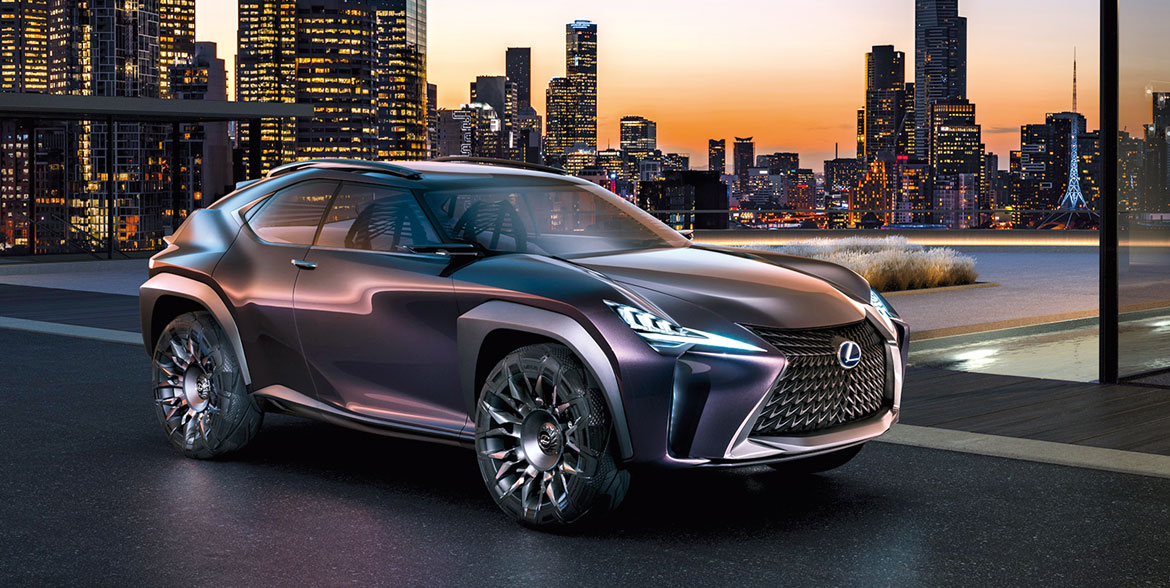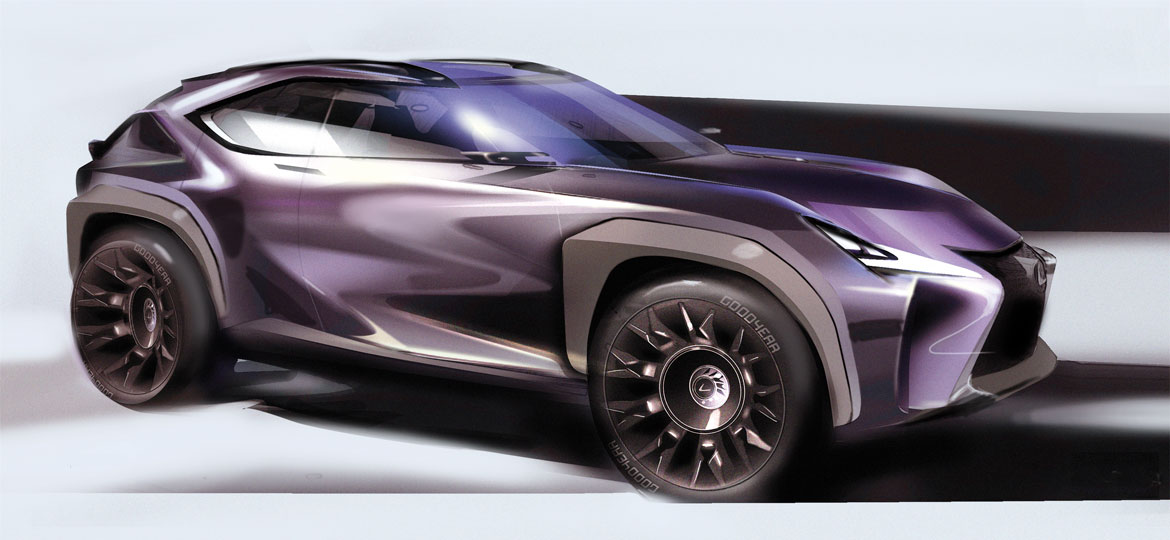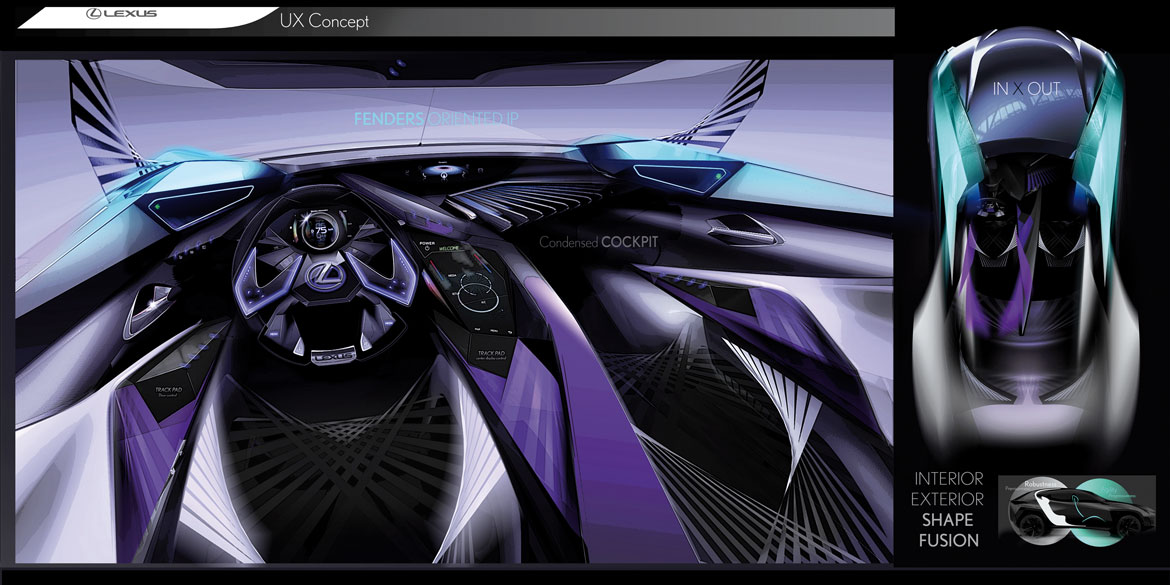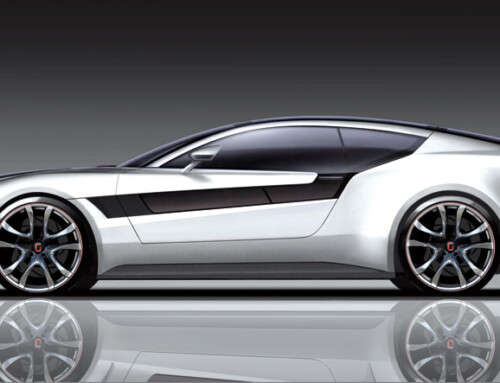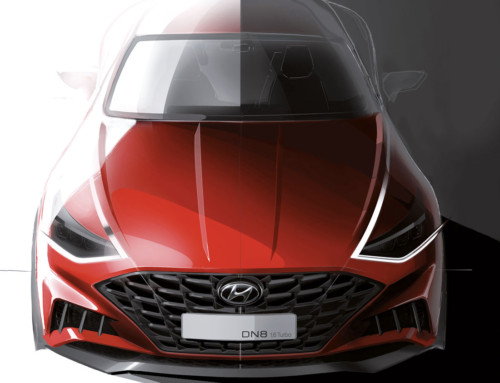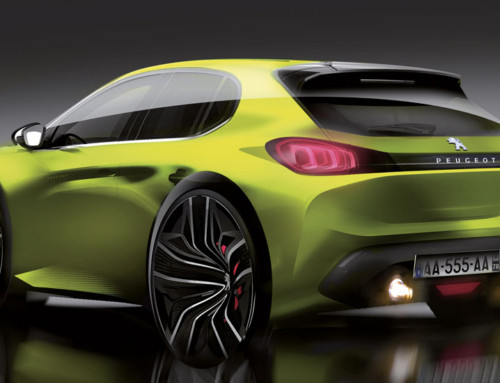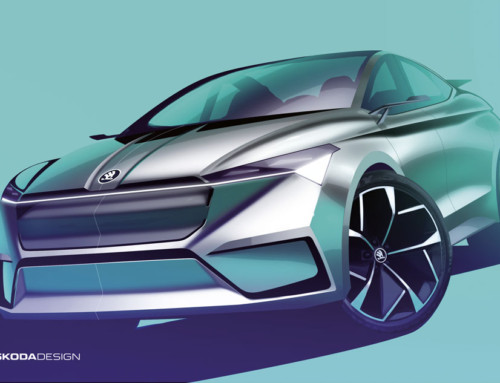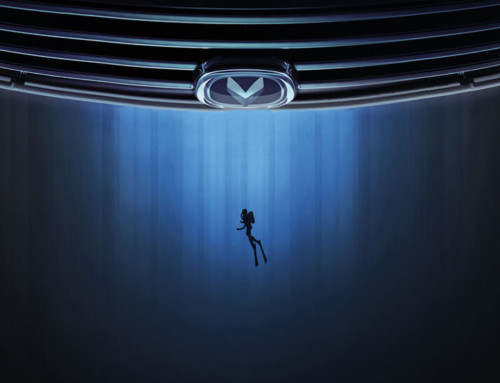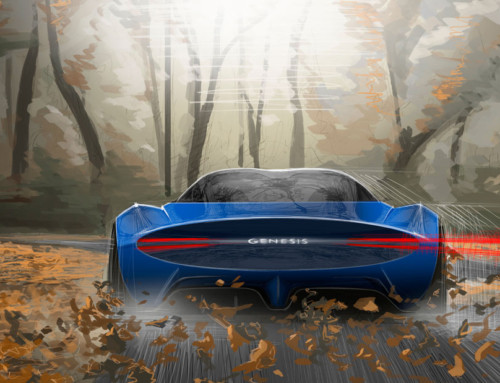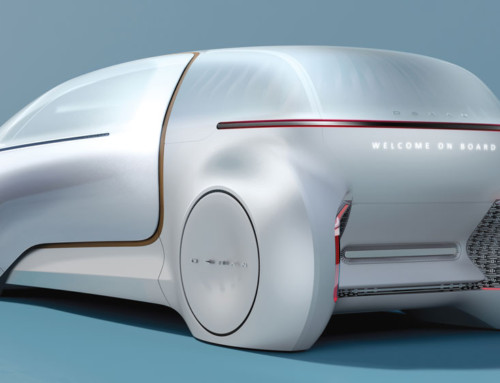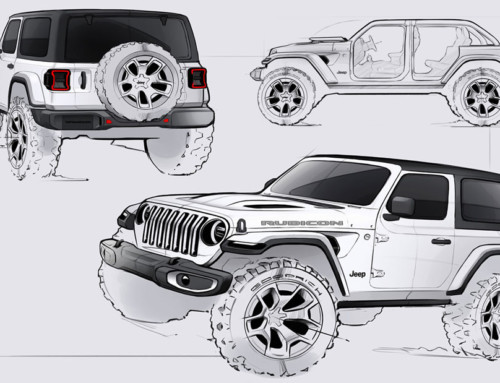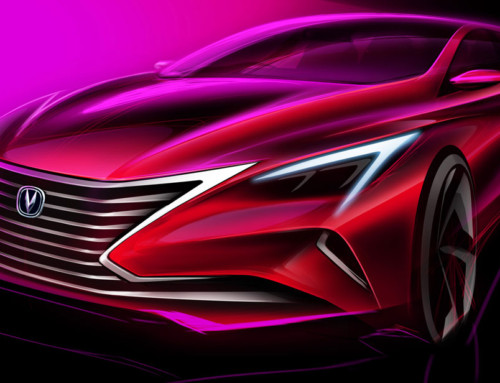To penetrate the rugged terrain of compact crossovers at its outermost boundaries, the order from Japan (artfully developed by the Lexus ED2 style centre in the south of France) rang out loud and clear: invest in the cabin and in the liaison between vehicle and surrounding environment, including the driver-technology relationship. “The ideal public for this concept consists of the hyper-connected urban young, totally accustomed to handling electronics and able to recognise worthwhile innovations”, confirms Alexandre Gommier, head of interior design. “That is why we focused on an ultra-modern, spectacular set-up without fear of going over the top”.
The cabin thus abounds in touch controls, electrochromic windows, an original removable audio device and, above all, a holographic display designed to influence the perception of space. In the place where you would expect to find the infotainment screen a disc dotted with service icons is projected. This seems to be beyond the windscreen, in line with the driver’s field of vision.
“In addition to the benefit in terms of safety, the “advanced” hologram induces a profound contamination effect between the cabin and the world outside: exactly what we were looking for”, explains the designer. “It is a solution of great impact that is joined by others such as the front pillars in layers of plexiglas anchored to an aluminium structure which points up the absence of separation”.
The aim is to redesign enjoyment of the vehicle in a more engaging, less ascetic way: mixing outside with inside means stressing emotional impact, especially in a crossover, because it harks back to the category’s all-terrain origins and the archetype of the open, liveable vehicle.
“The seats, then, offered us an exceptional opportunity for eliminating further barriers”, continues Gommier. “In fact, while maximising ergonomics due to the tilting structure, the Kinetic Seats do without padding and decompose the visual filter of the backs”.
The manufacturer’s hallmark body edges emerge strongly: “In the Lexus two lines never fall perpendicularly, it is a distinctive feature of ours compared to the Germans”, reiterates Stefan Rasmussen, head of exterior design.
The two important muscles on the front wheel arches, however, are not confined to creating boldly constructed volumes. They creep under the windscreen to give origin to two screens for the rearview mirrors at the sides of the dash and determine the lowered centre portion, thus redesigning the layout. The metal rises from the wheels, mechanical symbol par excellence, to shape the driver’s control station, a further, final confirmation of symbiosis between opposites.
Full article in Auto&Design no. 221

















